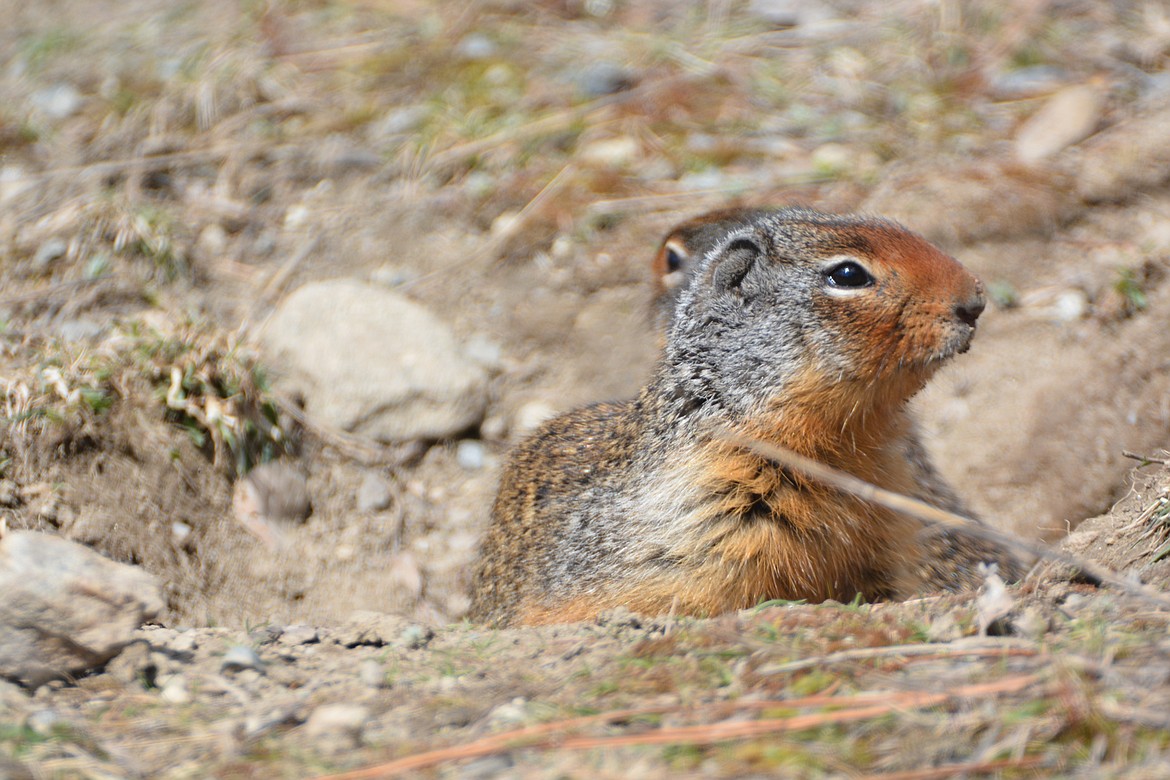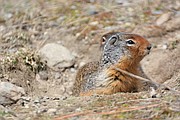Columbian ground squirrels emerge from hibernation
“If we had a keen vision of all that is ordinary in human life, it would be like hearing the grass grow or the squirrel’s heart beat, and we should die of that roar which is the other side of silence.”
— George Elliot, “Middlemarch,” 1872
Last week while traveling west of Bonners Ferry, about 9 miles up Myrtle Creek Canyon Road, I spotted what I perceived were two prairie dogs, but thought it was out of place being a long distance from the prairie.
These two rodents communicated with each other with high-pitched calls, as if to warn others there was danger. I was impressed after watching the pair more than half an hour, with their alertness, communication and co-dependency. They never stopped watching me and warning each other until I left the area.
In order to properly identify the rodent, I consulted a friend who knew the wildlife of the area, and Idaho Fish and Game. After some research and photo exchange we concluded it was a Columbian ground squirrel.
The Columbian ground squirrel (urocitellus columbianus) has white-speckled brown, black and gray fur on its head and back. It has reddish-tan fur on its face and nose, chest, undersides and legs. It has a reddish-black tail and white around its eyes.
The Columbian ground squirrel can be found in Canada in eastern British Columbia and Western Alberta. In the United States, it can be found in eastern Oregon and Washington, northern Idaho and western Montana. He can be found in open alpine meadows, dry grasslands and brushy areas.
The majority of the Columbian ground squirrel’s diet is made up of grasses and plant parts like stems, leaves, bulbs, fruits and seeds. Occasionally it will eat birds, insects and other small animals.
Mating season for the ground squirrel is in the early spring after the squirrels awake from hibernation. Males come out of hibernation first. The females will wake up a week later.
The female will have three to five babies in May or June. Females that live in lower elevations usually give birth to more babies than females that live in higher elevations. The babies have hair after about three days. In about two weeks they can walk and climb. They are weaned after about a month, but will stay near their mother through their first winter.
The Columbia ground squirrel is a diurnal mammal and is active above ground for around five months before it goes into its underground burrow around late July or early August, usually emerging in late March or early April. It lives at higher elevations. These animals construct three kinds of burrow: nest burrows, auxiliary burrows, and hibernation burrows.
The nest burrow is where the young are raised. The auxiliary burrow has no nest and is built far away from nest burrows. The burrow used for winter hibernation consists of one tunnel leading to the single nest chamber. Openings to burrows are usually under shrubs, rocks or fallen timber, but can also be found in open meadows. The males do not live close by females or the young. The females are more social than the males, because of their interactions with their young.
Columbian ground squirrels live in colonies. Females usually stay with the colony they were born into; males will leave their birth colony when they mature. Apart from noises to report predators, the squirrels also use visual cues, such as body postures, a range of tactile communication, including nosing, biting, butting, and chasing, as well as chemical communication.
Ground squirrels have big eyes located on the sides of their head, in a high position. Their wide field of vision allows them to see not only what is in front of them, but also parts of what’s behind them.
Ground squirrels get clean by rolling in the dust, then combing their coats with their teeth and claws.
Enjoy the wildlife and scenery of Boundary County!



